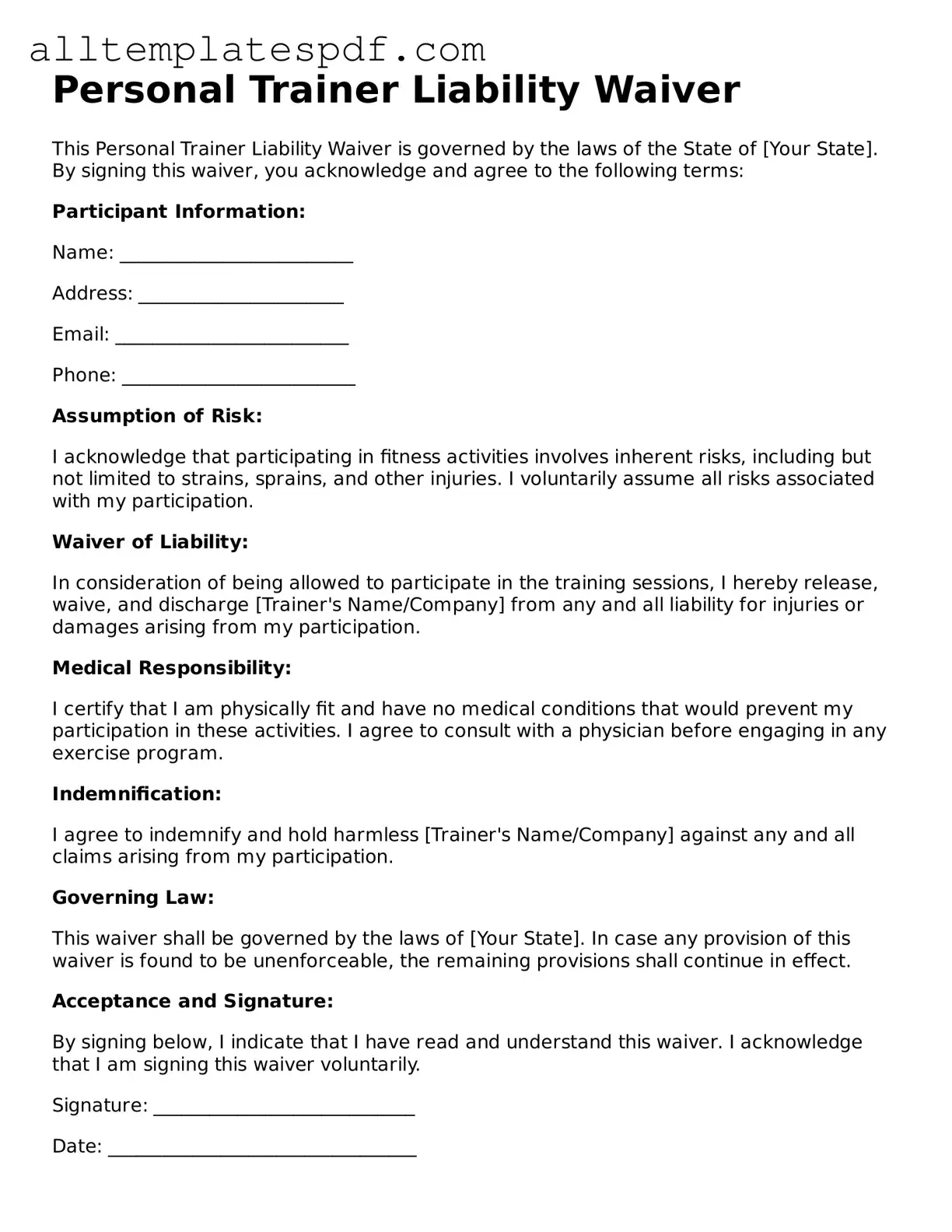Filling out a Personal Trainer Liability Waiver form is a crucial step for anyone engaging in fitness training. However, many individuals make mistakes that can lead to misunderstandings or legal complications. One common error is failing to read the entire document before signing. This oversight can result in a lack of awareness about the rights being waived and the responsibilities assumed.
Another frequent mistake involves providing incomplete personal information. Individuals often forget to fill in critical details such as emergency contacts or medical history. This information is vital for trainers to ensure safety and provide appropriate support during workouts. Without it, trainers may not be fully equipped to handle emergencies or health-related issues.
Additionally, some people neglect to ask questions about the waiver. It is essential to seek clarification on any terms or conditions that seem unclear. By not doing so, individuals may inadvertently agree to conditions they do not fully understand, which can lead to complications later on.
Misunderstanding the scope of the waiver is another common pitfall. Many individuals assume that signing the waiver means they cannot hold the trainer accountable for any injuries, regardless of circumstances. In reality, waivers typically do not protect trainers from negligence or misconduct. This misconception can lead to disappointment if an injury occurs.
Another mistake is failing to date the waiver correctly. A missing or incorrect date can complicate the validity of the document. It is important to ensure that all signatures are dated accurately to avoid any potential disputes regarding when the agreement was made.
People often overlook the importance of reviewing the waiver periodically. As personal circumstances change—such as new medical conditions or changes in fitness goals—updating the waiver becomes necessary. Failing to do so may result in outdated information that could affect safety and liability.
Some individuals may also rush through the process, leading to careless errors. This haste can result in illegible handwriting or skipped sections. Taking the time to fill out the form carefully ensures that all information is clear and complete, reducing the risk of future issues.
Lastly, individuals sometimes forget to keep a copy of the signed waiver for their records. Retaining a copy is essential for personal reference and may be needed in case of disputes. Without it, individuals may find themselves without proof of the terms they agreed to.
